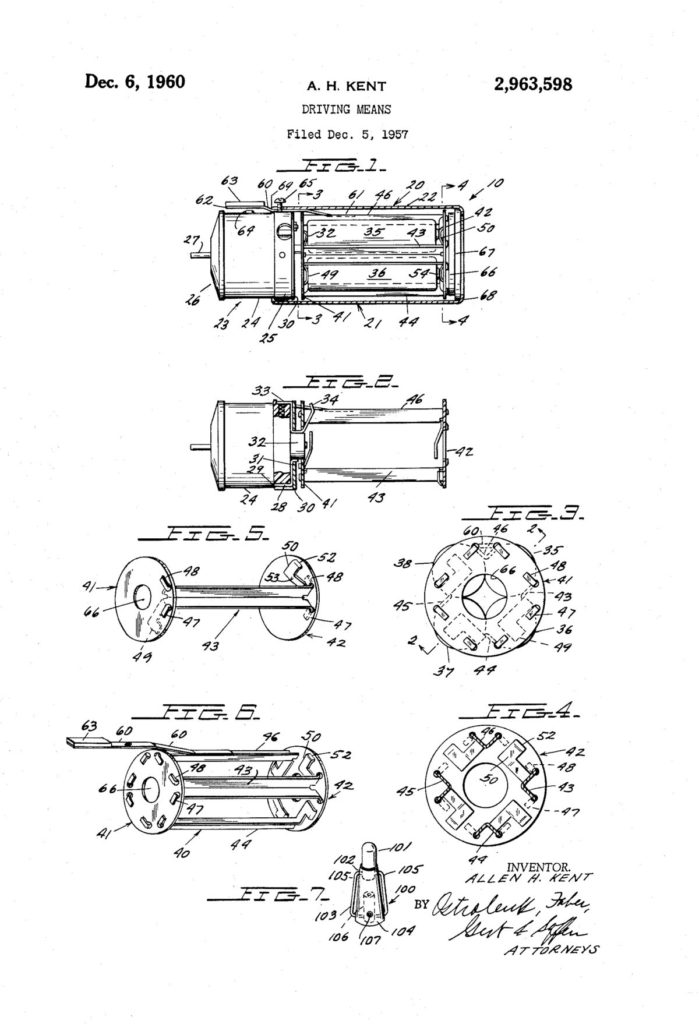Universal Cordless Electric toothbrush
One advantage to the electric toothbrush was its efficiency. Advocates claimed that in 45 effortless seconds the automatic brush cleaned the teeth as well as the recommended three-minute manual brushing. By the end of 1962, sales of 900,000 to one million automatic toothbrushes were reached, and companies producing the devices had grown from five in 1961 to 12.
In April 1963, with the field of choices expanding rapidly, Consumer Reports evaluated 15 models of electric toothbrush. The testers determined five to be acceptable. Ten were deemed unacceptable due to power inadequacies, including short life and frequent stalling. Among the five accepted was the Universal 7003 Cordless Electric Toothbrush made by Landers, Frary & Clark.
In 1960, when AH Kent filed his patent to produce the “driving means” for devices such as the Universal Model 7004 Cordless Electric toothbrush, he argued that a need had arisen for a miniature device that included its own power source and could be grasped with one hand during operation. He was ahead of his time in recognizing that “today considerable consumer demand is directed toward small power driven devices.”
Kent, Allen H (1960) Driving Means. US Patent 2,963,598. Filed Dec 5, 1957, and issued Dec 6, 1960; Segrave, K 2010 America Brushes Up, the Use of Marketing of Toothpaste and Toothbrushes in the Twentieth Century. Jefferson, NC: McFarland and Co


